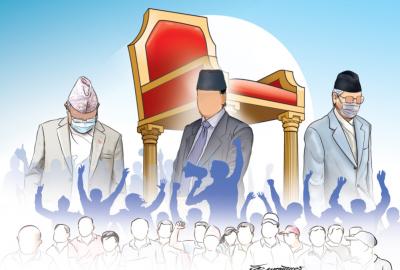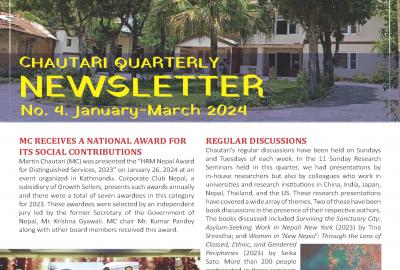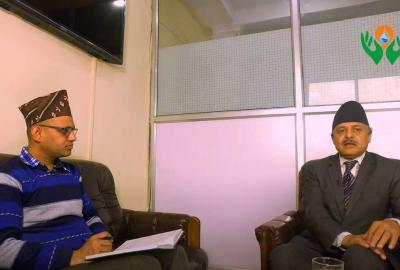Among their activities, we see a predisposition towards poorly organised conferences.

In several of my previous columns, I have argued for a pluralistic higher education and research landscape in Nepal. One major constituting presence in such a landscape should be functionally useful discipline-specific national academic organisations. I don’t think it would be controversial to suggest that the primary objective of all such bodies should be to promote the status of their disciplines in the country and enhance the quality of the teaching and research contents of those disciplines through academic exercises.
What such exercises might we expect? Based on the history of the work of similar organisations in other countries, we can expect such bodies to organise a regular seminar series and an annual conference. The academic value of the paper presentations and their critique by participants ought to be the main focus of such seminars and conferences. The organisation of thematic workshops for young researchers can also be part of the basic expectations since such practitioners benefit from the feedback received from other participants.
In other countries, such academic organisations have prepared and published theme-based bibliographies and (before the era of the internet) indexes to disciplinary journals. Such organisations have also published academic journals, monographs, collected essays and edited volumes (or “readers”). Bibliographies and indexes are useful research aids and need not be printed anymore since they can be uploaded on institutional websites where they can also be updated periodically. The values of regularly published disciplinary journals are well known. Monographs advance discussions in most disciplines of the social sciences and the humanities. Collected essays of practitioners make visible the contributions of individual scholars. Thematic readers can bring together otherwise scattered articles in easily accessible books.
Against such basic expectations, let us look at the life of some Nepali academic organisations.
SASON
I attended my first full-fledged Nepal Studies conference exactly 31 years ago. The conference was held in Kathmandu from September 4 to 6, 1992 under the title "Structure and Transition: Society, Poverty and Politics in Nepal". It was organised by the academic association of Nepali sociologists and anthropologists, Sociological-Anthropological Society of Nepal (SASON) which had been formed in 1985.
Organised just two years after the end of the Panchayat system in 1990, the conference saw its share of papers on various aspects of Nepali society organised under panel headings such as “Age, Gender and Identity”, “Inequality and Poverty” and “Social Organisation of Natural Resources”. Although some scheduled presenters did not show up, the conference was relatively well organised. No proceedings emerged from it but it was a signature event for SASON.
SASON went on to organise similar conferences in 1997, 2006 and 2012. These resulted in proceedings such as Anthropology and Sociology of Nepal: Cultures, Societies, Ecology and Development (1999) and Readings in Anthropology and Sociology of Nepal (2012). In 2010, it established the SASON Journal of Sociology and Anthropology. Four annual issues of this journal were published between 2010 and 2013. As far as I know, SASON never ran a regular seminar series. Nor did it publish theme-based bibliographies, monographs, collected essays or thematic readers.
After the official separation of the erstwhile joint programme in sociology and anthropology at Tribhuvan University in 2015, SASON initially went defunct but it was reportedly legally revived. However, I am not aware of any activities this body has done in the last three years. After the official separation, Nepali anthropologists formed the Anthropological Association of Nepal in 2016. This entity co-organised a conference in 2017 which I attended. Perhaps it has also organised some lectures but it has not done much else. An internet search does not reveal its archive or even a website of the organisation.
Similarly, the sociologists formed the Nepal Sociological Association (NSA) in 2017. This body has a website with useful archival information regarding its past activities. It has organised several conferences both before and after the pandemic, including one that was held earlier this month. It has also organised some occasional seminars but it has not published any journals, bibliographies, monographs or collected essays thus far. In one of its conferences, one influential member of NSA said that it was not important to publish a journal from the organisation!
HISAN
Although there were earlier attempts to form a History Association of Nepal (HISAN), the organisation known by this name currently was established in April 1999. The preamble to the constitution of HISAN states that the organisation’s main purposes are to develop a sense of fraternity between historians engaged in teaching and research on Nepali history and to promote an atmosphere of mutual help and goodwill amongst them; to assist the writing of history of all aspects of Nepal; and to look for, research and publish historical facts that promote Nepali national interests.
Many of the founding members of HISAN were historians who taught at Tribhuvan University, almost all of whom have now retired from active teaching. I became a life-member of HISAN in 2003 and attended a conference it had organised in Pokhara in April of that year. That conference was a good occasion to meet historians who teach in different colleges of the country but in academic terms, it was a poorly organised event. I have been told that this association has organised several such conferences since then but I have not been informed about them. At least such communication can be expected by a life member. This organisation launched a website in 2012 but it does not seem to exist anymore. It founded a journal HISAN: Journal of History Association of Nepal and its first issue was published in 2013. Its eighth issue–dated 2022–was recently uploaded in the Nepal Journals Online portal but none of the back issues can be found there. As far as I know, HISAN has not published any bibliographies, monographs or collected essays thus far.
The disciplinary body of Nepali political scientists—Political Science Association of Nepal (POLSAN)—split into two factions in the 1990s, and one of them remained active during that decade with several publications including a journal. However, even that body seems to have become inactive of late. This malaise continues in general.
Although all of these disciplinary organisations proclaim that they want to build professional solidarity amongst their practitioners, the above discussion suggests that the academic organisations formed by Nepali social scientists leave a lot to be desired. Professional solidarity is not built on empty air. It requires some knowledge of what other similar and dissimilar organisations have done in Nepal and elsewhere and then some vision and commitment to select, plan and execute specific projects and activities.
In recent years, among the activities executed by these disciplinary bodies, we see a predisposition towards poorly organised conferences. What is missing is a commitment to produce more difficult disciplinary goods. To do the relatively more labour-intensive works mentioned above, the leaders of such organisations must have bold vision and demonstrate commitment to academic goals. If they are institution capturing position-occupiers who have mostly been missing in academic action over the years, then not much can be expected from such organisations in the future. As such, our higher education and research landscape will continue to be poorer in the face of such dysfunctional disciplinary academic organisations.
Published at : September 14, 2023
Source: https://kathmandupost.com/columns/2023/09/14/disciplinary-associations-should-do-more









